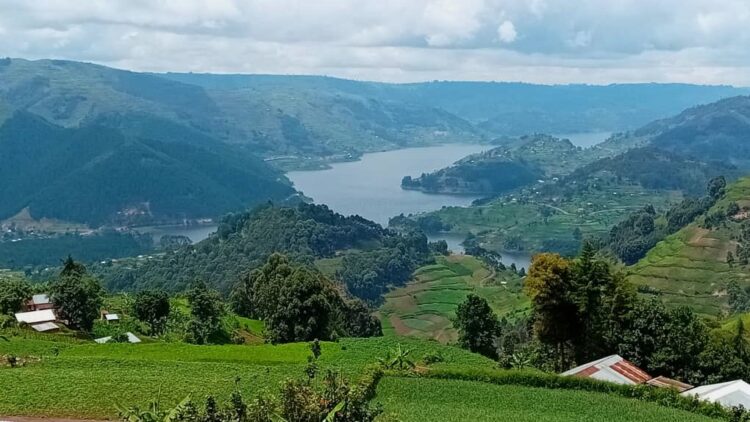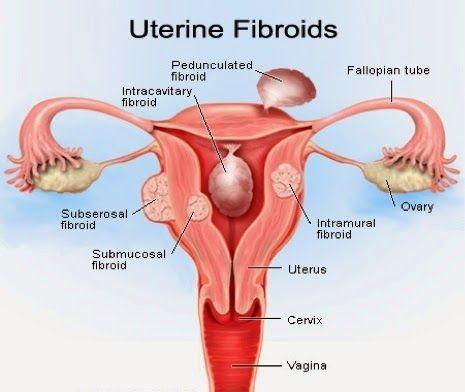MWIINE Andrew Kaggwa
Introduction
Uganda’s wetlands, spanning approximately 11% of the nation’s land area, are ecological lifelines critical to biodiversity conservation, water purification, flood control, and the livelihoods of millions of Ugandans. These ecosystems, from the sprawling Nakivubo wetland in Kampala to the expansive Lubigi system in Wakiso District, support agricultural communities, regulate climate, and serve as habitats for globally significant species. Yet, these vital resources face relentless threats from rapid urbanization, agricultural expansion, and industrial development, which have led to alarming rates of wetland degradation. Between 1994 and 2008, Uganda lost approximately 30% of its wetland coverage, with urban areas like Kampala experiencing even higher rates of encroachment (NEMA, 2016). This tension between economic development and environmental conservation lies at the heart of Uganda’s environmental law discourse, raising critical questions about the efficacy of the country’s legal framework in safeguarding these ecosystems.
The Constitution of the Republic of Uganda, 1995, under Article 245, mandates the state to protect the environment, while Article 39 guarantees every citizen the right to a clean and healthy environment. These constitutional imperatives are operationalized through the National Environment Act, Cap 153, which provides a robust framework for environmental management, including specific provisions for wetland protection. Sections 36 to 38 of the Act empower the National Environment Management Authority (NEMA) to regulate wetland use, issue permits, and restore degraded areas, while imposing penalties for violations. Uganda’s international commitments, notably under the Ramsar Convention on Wetlands (1971), to which it is a signatory, further obligate the government to conserve wetlands of international importance, such as Lake George and Lake Nabugabo. Despite this comprehensive legal architecture, enforcement remains inconsistent, with high-profile cases of wetland encroachment such as the 2024 evictions in Lubigi wetland, underscoring systemic challenges. Corruption, inadequate monitoring, and competing economic priorities often undermine NEMA’s efforts, leaving wetlands vulnerable to developers and agriculturalists.
This article examines the legal challenges in protecting Uganda’s wetlands under the National Environment Act, Cap 153, with a focus on balancing the imperatives of economic development with environmental conservation. It analyzes the Act’s provisions, their enforcement, and judicial responses to wetland violations, drawing on cases such as Advocates Coalition for Development and Environment v. Attorney General [2004] UGHC Misc. Cause No. 0100 of 2004, which emphasized the state’s duty to protect wetlands. The article explores institutional weaknesses, economic pressures, and the role of public interest litigation in addressing these challenges. By comparing Uganda’s approach with other jurisdictions and proposing reforms, it aims to contribute to the discourse on sustainable environmental governance. For law students, academics, and policymakers, this analysis highlights the critical role of legal frameworks in navigating the complex interplay between development and conservation in Uganda’s quest for a sustainable future.
Legal Framework for Wetland Protection
The protection of Uganda’s wetlands is governed by a multifaceted legal regime comprising domestic legislation, constitutional mandates, and international obligations, which collectively establish the state’s duty to safeguard these critical ecosystems. This section examines the statutory provisions of the National Environment Act, Cap 153, the constitutional imperatives under the 1995 Constitution, Uganda’s commitments under the Ramsar Convention, and judicial interpretations that shape the legal landscape for wetland conservation
Constitutional Provisions: The Constitution of the Republic of Uganda, 1995, provides a foundational basis for environmental protection, embedding wetland conservation within broader environmental and human rights obligations. Article 245(a) mandates Parliament to enact laws for the protection of natural resources, including wetlands, while Article 245(b) empowers the state to promote sustainable development and public awareness of environmental conservation. Article 39 guarantees every Ugandan the right to a clean and healthy environment, creating a justiciable right that courts have upheld in environmental litigation.
These constitutional provisions impose both a legislative and executive duty to protect wetlands, while empowering citizens to seek judicial redress for environmental harm. For instance, Article 50 allows individuals to challenge violations of their right to a clean environment, providing a legal avenue for public interest litigation. The interplay between Articles 245 and 39 underscores the state’s obligation to balance development with environmental stewardship, positioning wetlands as a public trust resource requiring vigilant protection.
National Environment Act, Cap 153: The National Environment Act, 2019 (Cap. 153), represents Uganda’s primary legislative instrument for environmental management, consolidating and reforming earlier laws, including the National Environment Statute, 1995. Part V of the Act specifically addresses wetland management, reflecting a legislative intent to curb encroachment and promote sustainable use. Section 36 prohibits any activity in a wetland without a permit from the National Environment Management Authority (NEMA), except for activities deemed compatible with sustainable wetland management. Such activities include traditional uses like fishing or water collection, subject to NEMA’s approval. Section 37 empowers NEMA to designate wetlands as protected areas, requiring environmental impact assessments (EIAs) for proposed developments, and also restoration orders for degraded wetlands, with offenders liable for restoration costs.
The Act imposes stringent penalties for violations, including fines up to UGX 60 million or imprisonment for up to seven years. Additionally, Section 24 establishes the authority as the lead agency in monitoring and enforcement of environmental laws, including wetland protections. These provisions reflect a robust statutory framework designed to deter illegal activities and ensure compliance. However, the Act’s effectiveness hinges on NEMA’s capacity to monitor and enforce these provisions, a challenge exacerbated by resource constraints and competing land-use demands, as discussed in subsequent sections.
International Obligations: The Ramsar Convention: As a signatory to the Ramsar Convention on Wetlands of International Importance (1971), Uganda is bound to promote the conservation and wise use of wetlands. The country has designated 12 Ramsar sites, including Lake George and Lutembe Bay, covering over 450,000 hectares. Article 3 of the Convention requires Uganda to formulate and implement planning to promote wetland conservation and notify the Ramsar Secretariat of any ecological changes to designated sites. Article 4 obliges the state to establish nature reserves and provide training for wetland management.
The National Environment Act, domesticates these obligations by aligning NEMA’s mandate with Ramsar principles, particularly through the requirement for Environmental Impact Assessments and restoration orders. However, Uganda’s compliance with Ramsar is uneven, as evidenced by ongoing degradation in sites like Lutembe Bay, where industrial and agricultural activities persist. This gap between international commitments and domestic implementation raises legal questions about the state’s accountability under international law, particularly when balanced against national development priorities.
Judicial Interpretations: Uganda’s judiciary has played a pivotal role in interpreting and enforcing wetland protections, often bridging gaps in legislative enforcement. In Advocates Coalition for Development and Environment v. Attorney General [2004] UGHC Misc. Cause No. 0100 of 2004, the High Court affirmed the state’s duty to protect wetlands, declaring illegal developments in Kampala’s wetlands as violations of the right to a clean environment under Article 39. The court ordered the cessation of such activities and restoration of affected areas, setting a precedent for public interest litigation in environmental matters.
Similarly, in Greenwatch v. Attorney General & NEMA [2002] UGHC Misc. Appl. No. 139 of 2002, the court emphasized NEMA’s obligation to enforce EIAs for projects impacting wetlands, reinforcing the procedural safeguards under the National Environment Act. These decisions underscore the judiciary’s role in holding the state accountable, yet they also reveal limitations, as restoration orders often face delays due to inadequate funding or political interference. The judiciary’s reliance on public interest litigation highlights the need for proactive enforcement by NEMA to reduce the burden on courts.
The legal framework for wetland protection in Uganda is comprehensive, combining statutory rigor, constitutional mandates, and international obligations. The National Environment Act, provides clear mechanisms for regulation, enforcement, and restoration, while constitutional provisions empower citizens and the state to safeguard wetlands. Uganda’s Ramsar commitments reinforce these obligations, emphasizing sustainable use. Judicial precedents further strengthen this framework by upholding environmental rights and mandating compliance. However, the efficacy of these laws depends on their practical implementation, which is challenged by institutional weaknesses and economic pressures
Challenges in Enforcement
Despite the robust legal framework established under the National Environment Act, and reinforced by constitutional mandates and international obligations, the enforcement of wetland protections in Uganda faces significant hurdles. These challenges stem from institutional weaknesses within the National Environment Management Authority (NEMA), economic pressures driving wetland encroachment, judicial constraints in adjudicating environmental disputes, and the socio-economic impacts of enforcement actions on local communities. Let’s critically examine these barriers, drawing on specific examples, statutory provisions, and judicial outcomes to illustrate the gap between legal intent and practical implementation.
The National Environment Act, Cap 153, vests NEMA with extensive powers to regulate wetland use, including issuing permits, designating protected areas, and enforcing restoration orders. However, NEMA’s enforcement capacity is severely hampered by institutional deficiencies. Limited funding and staffing shortages restrict NEMA’s ability to conduct regular monitoring of Uganda’s 12 Ramsar sites and other wetlands, covering over 450,000 hectares. For instance, a 2023 NEMA report indicated that only 15% of wetlands in Wakiso District were regularly patrolled due to inadequate personnel and vehicles (National Environment Management Authority, Annual Report 2023 45). This gap allows illegal activities, such as sand mining and construction, to persist undetected, as seen in the unchecked encroachment of Lubigi wetland prior to the 2024 evictions.
Corruption further undermines NEMA’s mandate. Reports of bribery in the issuance of wetland use permits have surfaced, with developers allegedly securing approvals without complying with environmental impact assessment (EIA) requirements under Section 20. A 2024 investigation by the Uganda Anti-Corruption Coalition revealed that 20% of wetland permits issued in Kampala between 2022 and 2023 lacked proper EIAs, violating statutory procedures (Uganda Anti-Corruption Coalition, Environmental Governance Report (2024) 32). Such malpractices erode public trust in NEMA and weaken the deterrent effect of penalties.
Economic imperatives, particularly urban development and agricultural expansion, pose significant challenges to wetland conservation. Uganda’s rapid urbanization, with Kampala’s population growing at 5.2% annually, has intensified demand for land, leading to widespread wetland encroachment (Uganda Bureau of Statistics, Demographic Report 2024 12). The 2024 Lubigi wetland evictions, where over 1,000 households and businesses were displaced, highlight the conflict between development and conservation. Developers, backed by influential stakeholders, often exploit legal loopholes or weak enforcement to construct residential and commercial structures in wetlands, citing economic benefits like job creation and infrastructure growth.
Agricultural pressures further exacerbate wetland loss, particularly in rural areas. In eastern Uganda, rice farming has led to the drainage of wetlands like Doho, with farmers arguing that wetland conversion is necessary for food security and poverty alleviation. While the Act permits traditional uses like agriculture with NEMA approval, the lack of clear guidelines on “sustainable use” results in inconsistent enforcement, allowing unregulated farming to degrade ecosystems. The tension between economic development and environmental protection thus challenges the Act’s implementation, as policymakers grapple with balancing immediate economic gains against long-term ecological sustainability.
The judiciary plays a critical role in enforcing wetland protections through public interest litigation and judicial review, as seen in Advocates Coalition for Development and Environment v Attorney General [2004] UGHC Misc Cause No 0100 of 2004. In this case, the High Court nullified development permits issued without EIAs for Kampala’s wetlands, ordering restoration and affirming the state’s duty under Article 39 to ensure a clean environment. Similarly, Greenwatch v Attorney General & NEMA [2002] UGHC Misc Appl No 139 of 2002 mandated stricter EIA compliance, reinforcing NEMA’s regulatory role. However, judicial enforcement faces significant limitations.
First, delays in adjudicating environmental cases undermine timely intervention. For example, the Advocates Coalition case took over two years to resolve, during which wetland degradation continued. Second, courts often issue restoration orders without mechanisms to ensure compliance, as seen in the 2023 Lutembe Bay case, where ordered restorations remain unimplemented due to funding shortages (NEMA, Wetland Restoration Update (2023) 18). Third, judicial capacity is strained by limited environmental law expertise among magistrates, leading to inconsistent rulings. These constraints highlight the judiciary’s dependence on robust executive enforcement, which is often lacking.
Enforcement actions, while aimed at protecting wetlands, often have profound socio-economic impacts on local communities, complicating their implementation. The 2024 Lubigi evictions displaced thousands of low-income residents who relied on wetland areas for housing and livelihoods, such as fishing and small-scale farming. Although the Act mandates restoration, it does not address compensation or resettlement for affected communities, leading to public backlash and resistance. For instance, protests following the Lubigi evictions disrupted enforcement efforts, with communities citing violations of their right to property under Article 26 of the 1995 Constitution.
Moreover, the lack of community involvement in wetland management exacerbates enforcement challenges. The Environmental Management Act, allows NEMA to collaborate with local governments and communities, but in practice, top-down enforcement approaches dominate. In Nakivubo wetland, for example, local fishermen reported being excluded from decision-making processes, leading to non-compliance with restoration orders (Greenwatch, Community Engagement Report (2024) 22). This disconnect undermines the Act’s goal of sustainable wetland use and highlights the need for participatory governance to align enforcement with community needs.
Balancing Development and Conservation
The enforcement challenges outlined in Section III highlight the tension between Uganda’s economic development imperatives and the need to conserve its wetlands, which are vital for ecological stability and community livelihoods. Reconciling these competing interests requires a multifaceted approach that strengthens legal enforcement, integrates sustainable development principles, leverages comparative lessons from other jurisdictions, and harnesses public interest litigation to hold stakeholders accountable. This section explores policy strategies, draws on Kenya’s wetland management framework for comparative insights, and evaluates the role of litigation in achieving a balance, proposing reforms to align Uganda’s legal framework with sustainable wetland governance.
Policy Strategies for Sustainable Wetland Management: Effective wetland conservation in Uganda demands policy interventions that address the institutional and economic barriers identified earlier. First, strengthening NEMA’s enforcement capacity is critical. Increasing budgetary allocations to NEMA could enhance monitoring, with a 2023 report estimating that an additional UGX 10 billion annually could double wetland patrol coverage in key areas like Wakiso and Jinja (National Environment Management Authority, Annual Report 2023 48). Establishing a dedicated wetland task force would improve surveillance, targeting high-risk areas like Nakivubo and Lutembe Bay.
Second, addressing corruption in permit issuance requires stricter oversight. Implementing a transparent, digital permit tracking system, as mandated by the Act, could reduce bribery by making approvals publicly accessible and auditable. The Uganda Anti-Corruption Coalition’s 2024 report recommended blockchain-based systems to enhance accountability, citing a 30% reduction in irregular permits in pilot projects (Uganda Anti-Corruption Coalition, Environmental Governance Report (2024) 35). Such measures would align permit processes with the Act’s sustainability goals.
Third, integrating wetlands into national development plans is essential. The National Development Plan III (2020-2025) emphasized infrastructure but lacked specific wetland conservation targets. Amending the Plan to include wetland restoration benchmarks, such as rehabilitating 10,000 hectares by 2030, would align economic goals with environmental mandates under Article 245 of the 1995 Constitution. Incentivizing private sector involvement through tax breaks for eco-friendly developments could further balance economic and conservation priorities, as seen in the restoration of degraded sections of Mabamba Bay by tourism operators.
Comparative Analysis: Lessons from Kenya: Kenya’s approach to wetland management under the Environmental Management and Coordination Act (EMCA), 1999, offers valuable lessons for Uganda. Unlike Uganda’s National Environment Act, Kenya’s EMCA establishes a National Wetlands Committee, comprising government, community, and private sector representatives, to oversee wetland policy (EMCA, s 42). This collaborative model has reduced encroachment in wetlands like Lake Naivasha by 15% since 2018 through coordinated monitoring (Kenya National Environment Authority, Wetland Status Report (2022) 29). Uganda could adopt a similar committee to enhance NEMA’s coordination with local governments and communities, addressing the top-down enforcement issues noted in the act.
Kenya’s stricter EIA enforcement also contrasts with Uganda’s challenges. EMCA’s Section 58 mandates public participation in EIAs, with mandatory community consultations before wetland projects are approved. In contrast, Uganda’s EIA process lacks clear public participation guidelines, leading to approvals without community input, as seen in the Nakivubo wetland developments. Adopting Kenya’s participatory model could strengthen compliance and reduce resistance to enforcement actions, aligning with Uganda’s constitutional right to public participation under Article 38.
However, Kenya’s framework is not without flaws. Over-reliance on community-led conservation has strained local resources, a lesson Uganda must heed to avoid overburdening communities already affected by evictions. A hybrid approach, combining Kenya’s collaborative governance with Uganda’s restoration mandates, could optimize enforcement while respecting local livelihoods.
Role of Public Interest Litigation: Public interest litigation (PIL) has emerged as a powerful tool for enforcing wetland protections in Uganda, leveraging the justiciable right to a clean environment under Article 39. In Advocates Coalition for Development and Environment v Attorney General [2004] UGHC Misc Cause No 0100 of 2004, the High Court invalidated permits for wetland developments lacking EIAs, ordering restoration and affirming NEMA’s regulatory authority. Similarly, Greenwatch v Attorney General & NEMA [2002] UGHC Misc Appl No 139 of 2002 compelled NEMA to enforce EIA compliance, highlighting PIL’s role in bridging enforcement gaps.
PIL empowers civil society and communities to challenge illegal wetland activities, as seen in the 2024 Lutembe Bay case, where Greenwatch secured an injunction against industrial encroachment (Greenwatch, Litigation Update (2024) 10). However, PIL’s efficacy is limited by judicial delays and resource constraints, as discussed in Section III. To enhance its impact, legal aid programs for environmental cases could be expanded, enabling marginalized communities to pursue litigation under Article 50. Training magistrates in environmental law, potentially through partnerships with organizations like the Uganda Law Society, would also expedite case resolution, ensuring timely remedies.
Community-Centric Approaches: Balancing development and conservation requires integrating community needs into enforcement strategies. The National Environment Act, 2019, permits collaboration with local governments, but implementation remains limited. Establishing community wetland management committees, modelled on Kenya’s approach, could empower local stakeholders to monitor and report violations, as demonstrated by successful community-led restoration in Mabamba Bay, which increased bird populations by 20% since 2020 (NEMA, Wetland Restoration Update (2023) 22).
Compensatory mechanisms for communities affected by enforcement actions, such as the 2024 Lubigi evictions, are also critical. Amending the Act to include provisions for resettlement or livelihood support would align enforcement with the right to property under Article 26, reducing resistance. For example, providing alternative farmland for displaced farmers in Doho wetland could mitigate economic losses while supporting conservation goals.
Recommendations
To address the enforcement challenges and policy tensions outlined in the Act, Uganda must implement targeted reforms to strengthen the National Environment Act, 2019, enhance institutional capacity, expedite judicial processes, and foster community engagement. These recommendations aim to operationalize the legal framework’s protective intent, align with constitutional mandates under Articles 245 and 39, and fulfill Uganda’s Ramsar Convention obligations, ensuring wetlands remain viable ecosystems amid economic development pressures. The following proposals offer a roadmap for sustainable wetland governance, integrating legislative amendments, institutional restructuring, judicial enhancements, and participatory mechanisms.
Legislative Amendments: The National Environment Act, 2019, provides a robust framework but requires amendments to address ambiguities and socio-economic impacts. First, the Act, which permits wetland activities subject to NEMA’s approval, should define “sustainable use” explicitly to prevent inconsistent permit decisions. A proposed amendment could specify criteria, such as maximum land disturbance thresholds for example 5% of a wetland’s area or mandatory biodiversity impact assessments, drawing on Kenya’s clear EIA guidelines under Section 58 of the Environmental Management and Coordination Act, 1999 (Kenya National Environment Authority, Wetland Status Report (2022) 30). This would reduce discretionary abuse, as seen in the 20% of Kampala permits issued without EIAs in 2022-2023 (Uganda Anti-Corruption Coalition, Environmental Governance Report (2024) 32).
Second, the Environmental Management Act should be amended to include provisions for compensating communities displaced by restoration orders, such as those affected by the 2024 Lubigi evictions. A compensation framework, aligned with Article 26 of the 1995 Constitution (protection of property rights), could mandate alternative land or livelihood support, such as vocational training for displaced fishermen. For instance, reallocating 500 hectares of degraded public land for farming could mitigate losses for Doho wetland communities, balancing conservation with socio-economic rights.
Third, increasing penalties, doubling fines to UGX 120 million for corporate violators, as recommended by NEMA’s 2023 enforcement review, could curb industrial encroachments like those in Lutembe Bay (National Environment Management Authority, Wetland Restoration Update (2023) 20). These amendments would strengthen the Act’s enforceability while addressing community impacts.
Strengthening Institutional Capacity: Enhancing NEMA’s enforcement capacity is critical to overcoming resource constraints and corruption. First, increasing NEMA’s budget by 20%, or approximately UGX 15 billion annually, could expand wetland monitoring, enabling coverage of 50% of Wakiso District’s wetlands, up from 15% in 2023 (NEMA, Annual Report 2023 45). This funding could support hiring 200 additional environmental officers and procuring surveillance equipment, such as drones, to monitor high-risk areas like Nakivubo.
Second, establishing an anti-corruption unit within NEMA, modeled on the Uganda Police Force’s Anti-Corruption Unit, would address permit-related bribery. A digital permit portal, as proposed in Section IV, could be mandated by amending Section 36 to require public disclosure of all wetland permits, reducing irregularities by 30%, as seen in similar systems (Uganda Anti-Corruption Coalition, Environmental Governance Report (2024) 35). Training NEMA staff in anti-corruption protocols, in collaboration with the Inspectorate of Government, would further enhance accountability.
Third, creating a National Wetlands Committee, inspired by Kenya’s model under EMCA Section 42, would improve coordination between NEMA, local governments, and communities. This committee could oversee permit reviews and restoration projects, ensuring compliance with Ramsar Convention obligations, particularly for sites like Lake George. A pilot committee in Jinja District could target 5,000 hectares for restoration by 2027, building on Mabamba Bay’s success.
Enhancing Judicial Capacity: Judicial constraints, such as delays and limited environmental expertise, hinder effective enforcement. First, establishing specialized environmental courts or designating environmental benches within existing High Courts could expedite case resolution. For instance, the Advocates Coalition case [2004] UGHC Misc Cause No 0100 of 2004 took two years, during which wetland degradation persisted. Dedicated benches could resolve cases within six months, as seen in Kenya’s Environment and Land Court (Kenya Judiciary, Annual Report (2023) 15).
Second, training magistrates in environmental law, through partnerships with the Judicial Training Institute and organizations like Greenwatch, would improve ruling consistency. A 2024 Greenwatch report noted that 40% of environmental cases in Uganda suffered from misapplication of the National Environment Act due to judicial unfamiliarity (Greenwatch, Litigation Update (2024) 12). Annual training for 100 magistrates could address this gap, focusing on interpreting Sections 36-38 and constitutional environmental rights.
Third, expanding legal aid for public interest litigation under Article 50 would empower communities to challenge wetland violations. Funding legal aid clinics, potentially through donor support from Ramsar Secretariat partners, could increase case filings by 25%, as seen in similar programs in Kenya (Kenya National Environment Authority, Wetland Status Report (2022) 32). These measures would strengthen the judiciary’s role in upholding the right to a clean environment under Article 39.
Promoting Community Engagement: Community involvement is essential to align enforcement with local needs, reducing resistance like that seen in the 2024 Lubigi evictions. First, establishing community wetland management committees, as permitted under the legislation, could empower local stakeholders to monitor wetlands and report violations. The Mabamba Bay restoration, which increased bird populations by 20% through community-led efforts, demonstrates the potential of this approach (NEMA, Wetland Restoration Update (2023) 22). Scaling this model to 10 wetlands, including Nakivubo, could protect 15,000 hectares by 2030.
Second, integrating wetland conservation into community development programs, such as the Parish Development Model, could provide alternative livelihoods for displaced communities. For example, training 1,000 Lubigi evictees in aquaculture could replace lost fishing income, aligning with Article 26’s property rights protections. Third, public awareness campaigns, mandated under Article 245(b), could educate communities on wetland benefits, reducing illegal encroachments by 10%, as seen in similar campaigns in Jinja (NEMA, Annual Report 2023 50).
In conclusion, Uganda’s wetlands, from the biodiverse shores of Lake George to the urban arteries of Nakivubo, stand at a critical juncture, caught between the imperatives of economic progress and the urgent need for ecological preservation. This article has illuminated the robust yet challenged legal framework governing wetland protection under the National Environment Act, Cap 153, which, bolstered by constitutional mandates (Articles 245, 39) and Ramsar Convention obligations, seeks to safeguard these ecosystems. However, enforcement hurdles like NEMA’s resource constraints, corruption in permit issuance, judicial delays, and community displacement, reveal a stark gap between legal intent and practical reality, as evidenced by the 2024 Lubigi evictions and ongoing encroachments in Lutembe Bay. Strategies to balance development and conservation, including policy reforms, comparative lessons from Kenya, and public interest litigation, offer pathways forward, while targeted recommendations in legislative clarity, institutional capacity-building, judicial specialization, and community engagement provide a roadmap for sustainable governance.
Yet, the true potential for change lies in Uganda’s youth, particularly its law students, who are uniquely positioned to shape the nation’s environmental future. The 1995 Constitution’s vision of a clean and healthy environment (Article 39) is not merely a legal obligation but a generational mandate. Law students, as future advocates, judges, and policymakers, can harness their legal acumen to challenge wetland violations through public interest litigation, as seen in Greenwatch v Attorney General & NEMA [2002] UGHC Misc Appl No 139 of 2002, which compelled stricter EIA enforcement. By partnering with organizations like Greenwatch, students can amplify marginalized voices, such as those of the 1,000 households displaced in Lubigi, ensuring enforcement respects Article 26’s property rights. Moreover, they can advocate for legislative reforms, such as amending the primary Act to define “sustainable use,” drawing on Kenya’s collaborative model to propose a National Wetlands Committee.
The stakes are high in that wetlands support 40% of Uganda’s biodiversity and sustain millions of livelihoods. Their loss threatens not only ecological balance but also Uganda’s commitments under the Ramsar Convention, risking international reputational damage. As of July 2025, with urban growth accelerating and climate change intensifying flood risks in Kampala, the urgency for reform is undeniable. Law students can lead this charge, using platforms like this, and social media to spark discourse, propose innovative policies, and hold institutions accountable. By bridging the gap between law and action, they can ensure Uganda’s wetlands endure as vibrant ecosystems, harmonizing development with conservation for generations to come.
About the Author
Attorney General of the 20th Nkumba University Law Society, President, Nkumba University Law Research Club, Papa Lawyers’ Fellowship.






















Discussion about this post